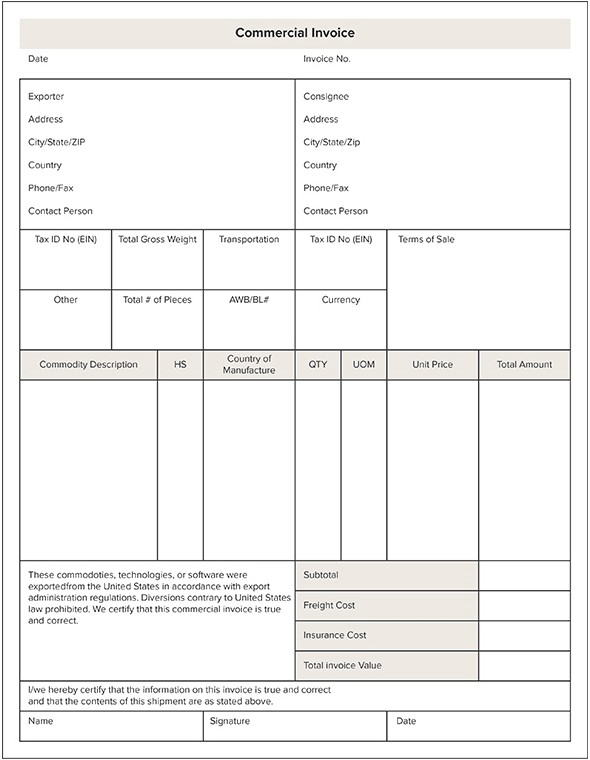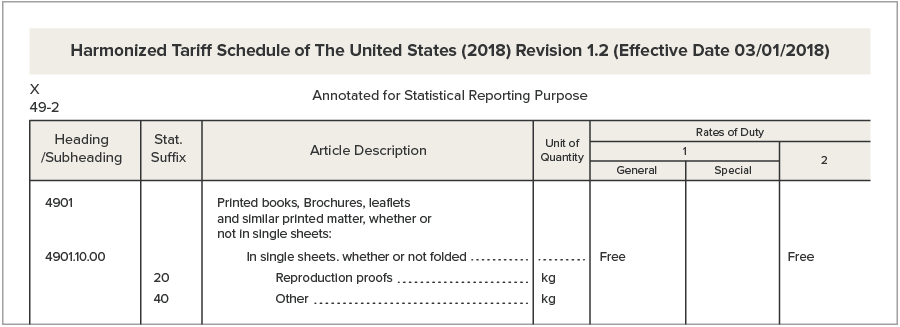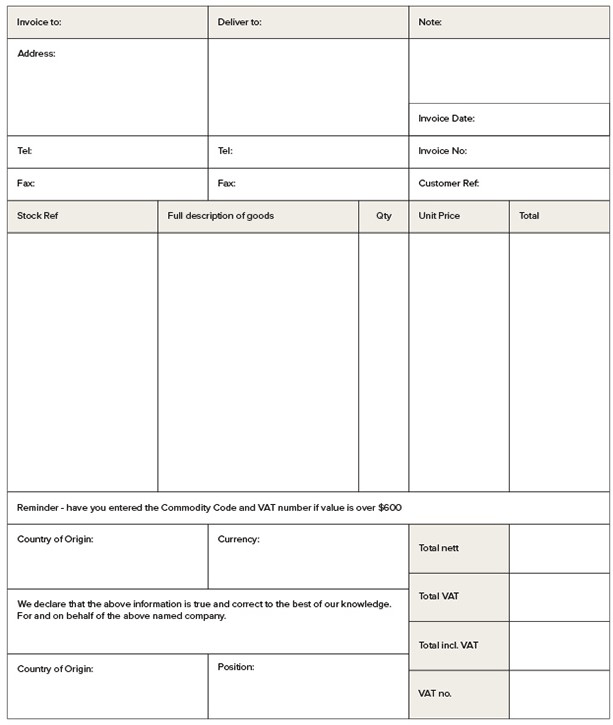We've already learned a little about the commercial invoice in Shipping 202, but it's such a key part of international shipping that we felt it deserved its own article. Any improperly or incompletely filled out commercial invoice can lead to significant issues during shipping, including delays, returns, and fines, so make sure you've accurately included all relevant information prior to sending any package internationally.
Recap - What is it?
A commercial invoice is a document that explains to customs officials what it is that you are shipping.
Recap - What is it for?
The commercial invoice is used by customs officials to determine:
- If the goods being imported are admissible (ie: Are you allowed to import all the items in your shipment?) and;
- The correct harmonized system (HS) code and rate of duty (ie: How much duty is to be charged on this import?).
When is it needed?
A commercial invoice is needed for any non-document shipment leaving the country. If you're using Secureship to create your shipment, our system will automatically guide you to this page as part of the shipment process.
Commercial Invoice broken down
Reasons for Export
Part of the commercial invoice is explaining why the products are being imported, and this is an important section of the document because it can have an impact on how your shipment is cleared and how much tax is applied to it. These are the seven reasons for export that are typically permitted:
- Permanent / Sold
- Temporary: This is intended for items that will be returning to the sender's country (or leaving the recipient's). Note that some carriers can't clear shipments as temporary, meaning that the lower tariff rates associated with temporary imports isn't always available. If that's the case and it's important to you, you'll have to find a customs broker at the destination country that can clear these goods for you (instead of using the carrier)
- Gift: A gift is defined as "any shipment containing articles to be given as an unsolicited gift, from one private individual to another private individual, which are not being shipped by a business nor consigned to a business. " When shipping a gift, include the words "Unsolicited gift" in the General Description and "gift" in the Detailed Description of Goods.
- Repair / Warranty: This option can be used both when sending an item for repair and when sending one back after repairs. In the former case, indicate in the General Description that the item is going for repair. If you're returning a repaired item, include the market or purchase value along with the cost of the repairs.
- Commercial Sample: A commercial sample is defined as "Any shipment containing articles which are sent free of charge that have been marked or mutilated or otherwise made unsuitable for sale or use except as commercial samples, being shipped with the view of soliciting an order or as a mock-up to furthering an existing order from the foreign entity." More simply, a sample is unusable for resale.
- Personal Effects: "Any shipment containing used personal articles such as unaccompanied baggage and household goods being shipped for relocation." This can be used in a variety of situations, but the most common is when someone is moving and shipping their items to an international location.
- Return Shipment: This is for shipments that were temporarily exported and are now being returned. Include the original tracking number and arrival date in the country.
For more information on the reasons for export and the situations in which each one applies, check out our support article on the subject.
Values used for Customs
One of the more confusing aspects of the commercial invoice is its emphasis on values and costs. There's only one total amount section in the document below, but there are several different possible values for any given item, so it's important to ensure that you've written the right one.

Repaired Shipments
One example of this issue is when an item is being sent back after repairs - do you write the retail value or the value of the repairs? In situations like this, we recommend covering every possibility as much as you can: include both the retail value as well as a side note indicating how much the repairs were worth. Customs sometimes likes to know the cost of the repair.
Other Values
There are some other ambiguities related to shipment values that can be hard to figure out. When an item depreciates, or anytime its original price is different from its current price, you should use its current value. In addition, items bought at wholesale but sold at retail should be indicated according to their retail value.
Harmonized Code
The harmonized code is a simple way to view the duties and taxes applicable to a given product. Many governments provide this information online. You can find the and harmonized codes of Canada here and the harmonized codes for the US here.

Harmonized codes from other countries can be found by simply searching 'harmonized code' followed by the name of the country. They can give you an idea of how much you'll pay in duties on each item you ship. Generally speaking, you can get away with using the harmonized code for a different country if you can't find one for the specific country. The codes are very close to each other, especially the first 4 or 6 digits.
Pro Forma - a commercial invoice alternative
While Pro Forma invoices are technically allowed for certain low-value shipments, we always recommend using the commercial invoice for a few reasons. Pro Forma's are rarely used, and only for non-commercial shipments, so brokers aren't used to seeing it and it can lead to delays even when filed correctly. We've seen many packages with Pro Formas be held up, so the commercial invoice is a better option.
Note: In Canada and the US, if your goods are valued under $2,500.00 (local destination currency), they qualify for Low Value Shipment (LVS). LVS are designed to provide the courier industry with the expedited release due to the low value of the goods.
Pro Forma Invoice Template

Summary
Shipping internationally can be a difficult undertaking, especially with the different forms and values that aren't required for domestic shipping. While there are some other forms that can become relevant in international shipping, we'll save those discussions for Shipping 206.
Our next lesson, Shipping 204, attempts to explain duties and taxes.

